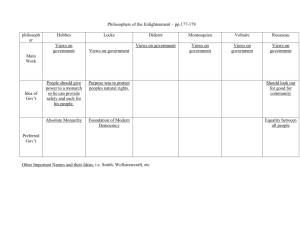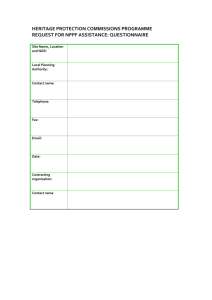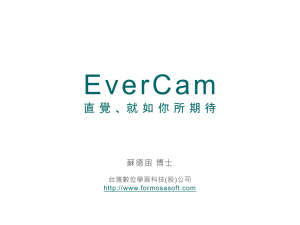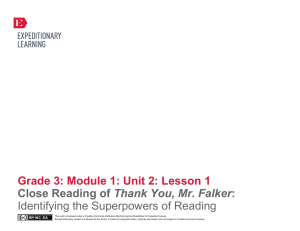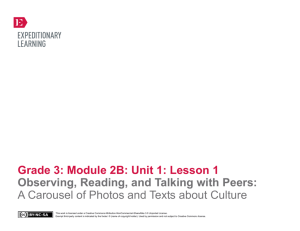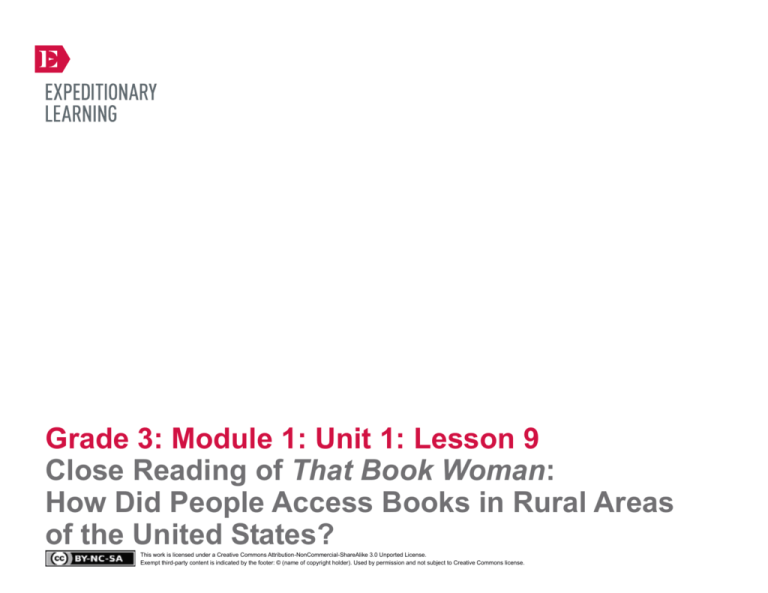
Grade 3: Module 1: Unit 1: Lesson 9
Close Reading of That Book Woman:
How Did People Access Books in Rural Areas
of the United States?
This work is licensed under a Creative Commons Attribution-NonCommercial-ShareAlike 3.0 Unported License.
Exempt third-party content is indicated by the footer: © (name of copyright holder). Used by permission and not subject to Creative Commons license.
GRADE 3: MODULE 1: UNIT 1: LESSON 9
Close Reading of That Book Woman:
How Did People Access Books in Rural Areas of the United States?
Long-Term Targets Addressed (Based on NYSP12 ELA CCLS)
I can identify the main message or lesson of a story using key details from the text. (RL.3.2)
I can describe the characters in a story (their traits, motivations, feelings). (RL.3.3)
I can describe how a character’s actions contribute to the events in the story. (RL.3.3)
I can document what I learn about a topic by sorting evidence into categories. (W.3.8)
I can effectively participate in a conversation with my peers and adults. (SL.3.1)
Supporting Learning Targets
Ongoing Assessment
• I can identify the main message of That Book Woman by reading excerpts from the text closely.
• Close Read recording form
(parts 1 and 2)
• I can sort key details from That Book Woman into categories.
• I can describe what the main character wanted and what he did.
• I can discuss how the main message of That Book Woman is conveyed through key details.
Agenda
Teaching Notes
1.
• In advance: Because That Book Woman is a more complex text, students need access to excerpts from
the book to complete the close reading cycle. See supporting materials for a list of appropriate excerpts.
Opening
A. Engaging the Reader and Building Fluency: Readaloud of That Book Woman (10 minutes)
B. Unpacking the Learning Targets (5 minutes)
2.
• Review: Helping Students Read Closely (Appendix 1).
• Prepare an anchor chart: Close Reading recording form for That Book Woman.
Work Time
A. Rereading on Your Own: Capturing the Gist (20
minutes)
B. Reading Again for Important Details: Somebody In
Wanted But So (20 minutes)
3. Closing and Assessment
A. Debrief (5 minutes)
4. Homework
Copyright © 2013 by Expeditionary Learning, New York, NY. All Rights Reserved.
NYS Common Core ELA Curriculum • G3:M1:U1:L9 • June 2013 •
1
GRADE 3: MODULE 1: UNIT 1: LESSON 9
Close Reading of That Book Woman:
How Did People Access Books in Rural Areas of the United States?
Lesson Vocabulary
Materials
dialect, Appalachia, rural, gist, excerpt
• That Book Woman by Heather Henson (book; one for teacher)
• Document camera and projector
• Close Read recording form anchor chart for Rain School anchor chart and Close Read recording form anchor chart for
Nasreen’s Secret School (from Lessons 2 and 6, respectively)
• Excerpts from That Book Woman
• Close Read recording form (one per student)
• Conversation Criteria Checklist (for teacher use; from Lesson 4)
• Chart paper for the anchor chart: Close Read recording form for That Book Woman
Opening
Meeting Students’ Needs
A. Engaging the Reader and Building Fluency: Read-aloud of That Book Woman (10 minutes)
• Gather students in a circle. Tell them that today they are going to be hearing and reading a new story called That Book
Woman by Heather Henson; tell students that the language in this book is going to sound different from the language in the
books they have heard so far because the author wrote it in the dialect some people speak in the Appalachian region of
Kentucky. Do not explain the story. Simply define dialect as “the language of a certain group.” Students can revisit this idea,
and connect it to their own lives, after reading the text.
• When introducing new vocabulary,
consider having the words written
on index cards. Show the card to
students when talking about the
word. Then post the word on a word
wall. This is helpful to visual
learners.
• As with other read-alouds in this unit, ask students to follow along in their text. (This promotes fluency.) Tell them that they
should read along as the story is being read to them.
• Project the book That Book Woman and read the entire text slowly, fluently, without interruption. If students get excited
and want to talk about the text, remind them: “Just like the other books we have read, you will have a chance to reread this
story and talk about it today and tomorrow.”
Note: It is important that this text is read without interruption. The purpose is to acquaint students with the text, not aid
them in comprehension through questioning or discussion.
Copyright © 2013 by Expeditionary Learning, New York, NY. All Rights Reserved.
NYS Common Core ELA Curriculum • G3:M1:U1:L9 • June 2013 •
2
GRADE 3: MODULE 1: UNIT 1: LESSON 9
Close Reading of That Book Woman:
How Did People Access Books in Rural Areas of the United States?
Meeting Students’ Needs
Opening (continued)
B. Unpacking the Learning Targets (5 minutes)
• Direct students to the learning targets for this lesson. Tell students that this is the third time they have worked with close
reading and these learning targets. Read each target individually, reminding students of what they are doing for each target.
After reading each target and explaining it, gauge confidence with the learning targets using a thumbs-up, thumbs-sideways,
or thumbs-down.
Meeting Students’ Needs
Work Time
A. Rereading on Your Own: Capturing the Gist (20 minutes)
• Students will need access to the excerpts from That Book Woman and the Close Read recording form.
• Remind students of the close reading work they have done so far. For each text, they did two important things during their
first independent read: They tried to find the gist for each section and wrote their idea on a sticky note as well as underlined
or wrote down unfamiliar words on sticky notes.
• Explain to students that this story will be a little more difficult due to the dialect in which it is written. Consider saying
something such as: “All readers come across texts written in language that is unfamiliar and difficult. This happens if I read
text written a long time ago, or a text written in a style of speaking I do not know very well. When this happens, capturing
the gist of the text is especially important. If you get confused, look for all the words you do know and try to figure out who is
the main character in story and what is happening. Try not to get stuck on every word you do not recognize. Write it down
and move on.”
• Remind students to read just one section at a time, capturing the gist of each section before moving on.
• Tell students that their text will look a little different from the book. This is because they will be reading excerpts of the
story. Define the word excerpts as parts of the text.
• Allow students 15 minutes to work with the text on their own. As they work, circulate and support students as needed.
• After 15 minutes, ask students to fill in the top box, which asks for their ideas about the lesson of the story, on their Close
Read recording form. Once they have done this, tell students they will now have 10 minutes to discuss, in small groups or
partnerships, the reading work they have done so far.
Copyright © 2013 by Expeditionary Learning, New York, NY. All Rights Reserved.
NYS Common Core ELA Curriculum • G3:M1:U1:L9 • June 2013 •
3
GRADE 3: MODULE 1: UNIT 1: LESSON 9
Close Reading of That Book Woman:
How Did People Access Books in Rural Areas of the United States?
Work Time (continued)
Meeting Students’ Needs
B. Reading Again for Important Details: Somebody In Wanted But So (SIWBS) (20 minutes)
• Gather students back in a circle. Direct their attention to the Close Read recording form anchor chart for Rain
School anchor chart and Close Read recording form anchor chart for Nasreen’s Secret School. Use these to
review the categories students used to collect important details. Remind students that they were looking for characters,
setting, motivation, problem, and solution. Discuss these to clarify and activate prior knowledge.
• The language of That Book Woman may
prove especially challenging to ELL
students. Consider providing the
illustrations to aid their
comprehension.
• After 10 minutes of independent close reading time, invite students to once again discuss their reading work in their groups.
Ask students to go through each category of note-taking, giving every student in their group a chance to share their ideas.
Tell them that when there is a difference between two students’ ideas, it is important to notice that and discuss why each
made the decision they made.
• As an extension activity, consider
having students in a group complete
the second part of the close read
from a secondary character’s point
of view. For example, what is the
mother’s motivation in the story?
What is her problem? What is the
solution through her eyes?
• As students work, continue gathering data about students’ discussion skills on the Conversation Criteria Checklist.
• Point out to students that our understanding of a story gets deeper or changes when we reread, paying attention to details
that relate to the main message or lesson.
• Direct students to fill in the last section of their Close Read recording form. “NOW what do you think the lesson of this story
is? Why do you think this?”
• Gather students back in a circle. Invite students to assist in completing the anchor chart: Close Read recording form for
That Book Woman.
Meeting Students’ Needs
Closing and Assessment
A. Debrief (5 minutes)
• Debrief with the questions: “How did the language of this story change the experience for you?” and “How did reading the
text closely multiple times help you?”
Meeting Students’ Needs
Homework
• Find Kentucky on a map of the United States. Talk to someone at home about how people got books in rural Kentucky a long
time ago. How is it different from how you get books now where you live?
Copyright © 2013 by Expeditionary Learning, New York, NY. All Rights Reserved.
NYS Common Core ELA Curriculum • G3:M1:U1:L9 • June 2013 •
4
Grade 3: Module 1: Unit 1: Lesson 9
Supporting Materials
This work is licensed under a Creative Commons Attribution-NonCommercial-ShareAlike 3.0 Unported License.
Exempt third-party content is indicated by the footer: © (name of copyright holder). Used by permission and not subject to Creative Commons license.
GRADE 3: MODULE 1: UNIT 1: LESSON 9
Excerpts from That Book Woman
Written by Heather Henson & Illustrated by David Small
Because That Book Woman is a very challenging text, students will only be asked to read excerpts for their close
reading. This approach is similar to how older students might read a short passage of a primary source
document.
This page shows on which page(s) each excerpt can be found, as well as the starting and ending phrase of the
relevant excerpt.
Pages 1–4
Beginning: “My folks and me—”
Ending: “… when they take a-wander.”
Page 7
Beginning: “And I do not fancy it one bit.”
Ending: “But me, I am not scholar boy.”
Page 12
Beginning: “Now what that lady brings …”
Ending: “… and all for naught, I reckon.”
Page 15
Beginning: “To my surprise…”
Ending: “… she’ll come again to swap these books for more!”
Page 16
Beginning: “Now me …”
Ending: “That horse of hers sure must be brave, I reckon.”
Pages 21–22
Beginning: “I stand a spell to watch …”
Ending: “… and quiet-like we start to read.”
Pages 27–28
Beginning: “I open up the book …”
Ending: “… it makes me smile right back.”
Copyright © 2013 by Expeditionary Learning, New York, NY. All Rights Reserved.
NYS Common Core ELA Curriculum • G3:M1:U1:L9 • June 2013 •
1
GRADE 3: MODULE 1: UNIT 1: LESSON 9
Close Read Recording Form
Close Read Recording Form for book:
Name:
Date:
Capturing the Gist of a Story
After reading this for the first time on your own, what do you think the lesson of this story is?
Gathering Important Details in a Story
Somebody …
(character)
in …
(setting)
wanted …
(motivation)
but …
(problem)
so …
(resolution)
After thinking more closely about the characters and their motivations, now what do you think the lesson of this story is?
Why do you think this?
1Kylene
Beers, When Kids Can’t Read: What Teachers Can Do (Portsmouth, NH: Heinemann, 2003), 144–49.
Copyright © 2013 by Expeditionary Learning, New York, NY. All Rights Reserved.
NYS Common Core ELA Curriculum • G3:M1:U1:L9 • June 2013 •
2



